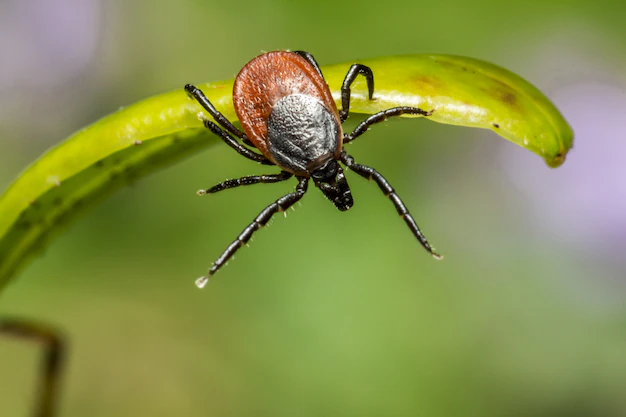Ticks are more than just annoying, uninvited guests in homes and outdoor spaces; they are potentially dangerous carriers of diseases that can adversely affect the health of both humans and animals.
Taking proactive measures for effective tick control is crucial, ensuring a safer, healthier environment for you and your beloved pets.
Here Are Ten Crucial Strategies For Tick Prevention For Your Home And Your Furry Friends
In this blog post, we delve into ten strategic methods to manage and reduce the presence of ticks. These strategies range from natural deterrents to chemical treatments, each offering unique benefits and considerations.
1. Regular Pet Checks

Consistent checking of your pets, especially after outdoor activities, is crucial. Ticks love to hide in less visible areas like under the fur, between toes, and around the ears. Use a tick removal tool or tweezers for safe removal, ensuring you remove the entire tick. Grooming your pets regularly also helps in early detection. Brushing their fur keeps them clean and can reveal hidden ticks. Remember, early removal reduces the risk of disease transmission.
2. Tick-Repellent Pet Products
There’s a wide range of pet tick-repellent products, including collars, sprays, and topical treatments. Consult your vet to choose a product that suits your pet’s needs and size. These products often repel ticks or kill them upon contact, thus reducing the chances of infestation. Remember, consistency is the critical factor here. Regularly apply or replace these products as directed to maintain their effectiveness. Also, monitor your pet for any allergic reactions.
3. Maintaining Your Yard
Ticks thrive in overgrown grass and bushy areas. Keeping your lawn mowed and bushes trimmed reduces their habitat. Clear leaf litter and tall weeds where ticks are likely to hide. Use wood chips or gravel between lawns and wooded areas to restrict tick migration into your yard. This adds aesthetic value and acts as a barrier against ticks.
4. Using Tick-Repellent Plants

Certain plants naturally repel ticks. Planting garlic, rosemary, mint, and chrysanthemums around your yard can help keep ticks away. These plants contain natural oils and fragrances that ticks dislike. These plants are easy to maintain and can be used in your kitchen, offering a dual benefit. Remember, while these plants help, they should be part of a larger prevention strategy.
5. Regular Home Cleaning
Regular cleaning is essential in keeping ticks out. Vacuuming carpets, furniture, and areas where your pets spend a lot of time helps remove ticks and their eggs. Don’t forget to clean under furniture and corners where ticks might hide. Washing bedding, especially pet bedding, in hot water regularly can kill ticks that may have hitched a ride indoors.
6. Protecting Yourself
When venturing into tick-prone areas, wear protective clothing. Long sleeves, pants tucked into socks, and hats can prevent ticks from latching onto your skin. Light-colored clothing makes it easier to spot ticks. Using insect repellents containing DEET on your skin and clothing can also deter ticks. Reapply as directed, especially after sweating or swimming.
7. Checking Your Home’s Perimeter
Inspect the exterior of your home for any cracks or crevices. Ticks can enter through tiny openings. Seal gaps in doors, windows, and foundations to keep ticks out. Ensuring window screens are intact and in good condition can also prevent ticks from entering your home. Regular inspections and maintenance can make a big difference.
8. Use Of Pesticides
In severe tick infestations, pesticides may be necessary. Consult a professional for the best course of action. They can apply safe and effective treatments to your yard and home’s perimeter. Remember, pesticides should be a last resort due to their environmental impact. Always follow the instructions and keep pets and children away during application.
8. Encouraging Natural Predators

Welcoming natural tick predators into your yard can be an eco-friendly solution. Birds, chickens, and certain types of nematodes are known to feed on ticks. Installing bird feeders or allowing a few chickens to roam your yard can help reduce the tick population. However, be mindful of attracting unwanted wildlife. Ensure your yard is still safe and secure for your pets and family.
9. Staying Informed
Stay updated on the latest tick prevention methods and be aware of the tick season in your area. Knowledge is power when it comes to preventing tick infestations. Join local community groups or online forums for tips and updates. The more informed you are, the better.
Conclusion
Tick prevention requires a multi-faceted approach. Combining the above tips and staying informed about tick activity in your area, as well as the latest prevention methods, you can ensure you always stay one step ahead of ticks and any other annoying pests. Alternatively, trying to do all this yourself can become stressful, so calling a professional might be your best bet. Not only will they sort out your problem efficiently, but they will also do so promptly.
Read Also:




























